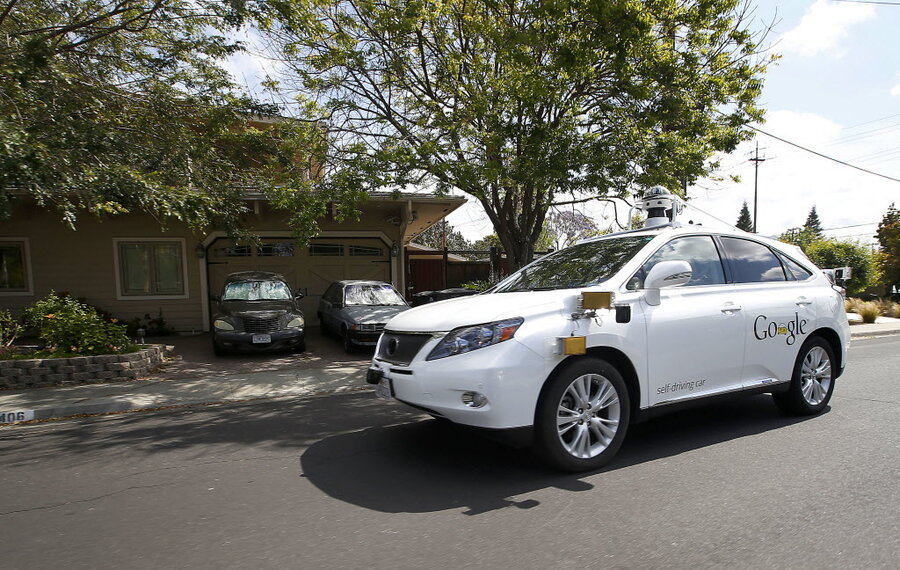Traffic deaths spiked this year. Will self-driving cars bring them back down?
Loading...
Fatal crashes in the first half of 2016 jumped by more than 1,500 when compared to last year, marking the largest spike in 50 years.
From January to June, 17,775 people died in traffic-related incidents, increasing by 10.4 percent from the same period in 2015, a report from the National Highway Traffic Safety Administration (NHTSA) found. While traffic deaths remain significantly lower than pre-2006 numbers, many aren't satisfied and say there’s more to be done to ensure safety on the nation’s streets. As the United States continues to lag behind other industrialized nations in traffic safety numbers, some are looking to autonomous, or self-driving, vehicles as an answer to accidental fatalities caused by human error in motor vehicle crashes.
"All of a sudden we're losing ground," NHTSA administrator Mark Rosekind said at an event in Arlington, Va. "We have an immediate crisis on our hands and we also have a long-term challenge."
Last week, President Obama’s administration set an ambitious safety goal: an end to traffic-related deaths by the year 2046. With human error accounting for 94 percent of crashes, some have argued that replacing human-driven cars with a fleet of autonomous vehicles could eradicate many of those incidents.
The government plan to reduce traffic deaths is multi-faceted, but a key piece of that plan is boosting autonomous vehicle technology. Pledging $1 million in annual grants for the next three years, the US Transportation Department plans to focus on infrastructure improvements, but acknowledges that advances in driving technologies must be made to see a greater impact in safety.
"We know that setting the bar for safety to the highest possible standard requires commitment from everyone to think differently about safety," said Transportation Secretary Anthony Foxx, according to the AP, "from drivers to industry, safety organizations, and government at all levels."
The NHTSA report says it’s too early to draw concrete links between drivers’ actions and the spike in fatalities. While Americans drove 50.5 billion more miles in the first half of 2016 than in the same period in 2015, increased travel isn’t necessarily the reason behind the rising numbers. In 2015, a year which saw a smaller increase in traffic related deaths, officials found that the jump came mostly from crashes involving vulnerable travelers, like cyclists, motorcyclists, and pedestrians, who have become more prevalent in recent years while drivers have become increasingly distracted by technology.
The solution, autonomous vehicle advocates and companies say, is to increase the number of self-driving cars on the streets. Unlike humans who are subject to distractions and fatigue and prone to violating traffic rules while in a rush, self-driving cars don’t have problems focusing and are programmed to follow the laws, making them a safer alternative.
But getting Americans to take their hands of the steering wheel won’t be an easy task. In a recent survey, 51 percent of Americans said they wanted to retain control of their vehicles, even if that meant the roadways would be less safe overall. Several recent crashes involving autonomous vehicles occurred when distracted and error-prone drivers hit the self-driving, law-abiding cars, indicating that putting autonomous cars on the road alongside human-operated vehicles won’t necessarily make the streets safer.
Instead, experts say, real significant improvements will come when all of the vehicles on the road are computer-operated, something that could take until 2060 to achieve. Still, autonomous cars have become commonplace in certain parts of the nation, and the government rolled out a list of 15 benchmarks manufacturers must follow to produce regulation vehicles.
In Pittsburgh, where ride-hailing giant Uber launched a pilot program to test self-driving cars last month, autonomous vehicles have seen success. While the only vehicle to be involved in a crash thus far was rear-ended by a human driver, passengers and drivers remain skeptical of the safety claims manufacturers have boasted.
Despite driver pushback, the industry, backed by government support, is eager to normalize the technology, and it’s becoming harder to argue that humans can drive better than computers. Some say too much about the technology remains uncertain, arguing that self-driving cars aren't ready to take over the roads. But the success of pilot programs could say otherwise.
"The clear theme is human error and inattention," Chris Urmson, the former head of Google's self-driving program, wrote in a blog post last year. "Our self-driving cars can pay attention to hundreds of objects at once, 360 degrees in all directions, and they never get tired, irritable or distracted."






